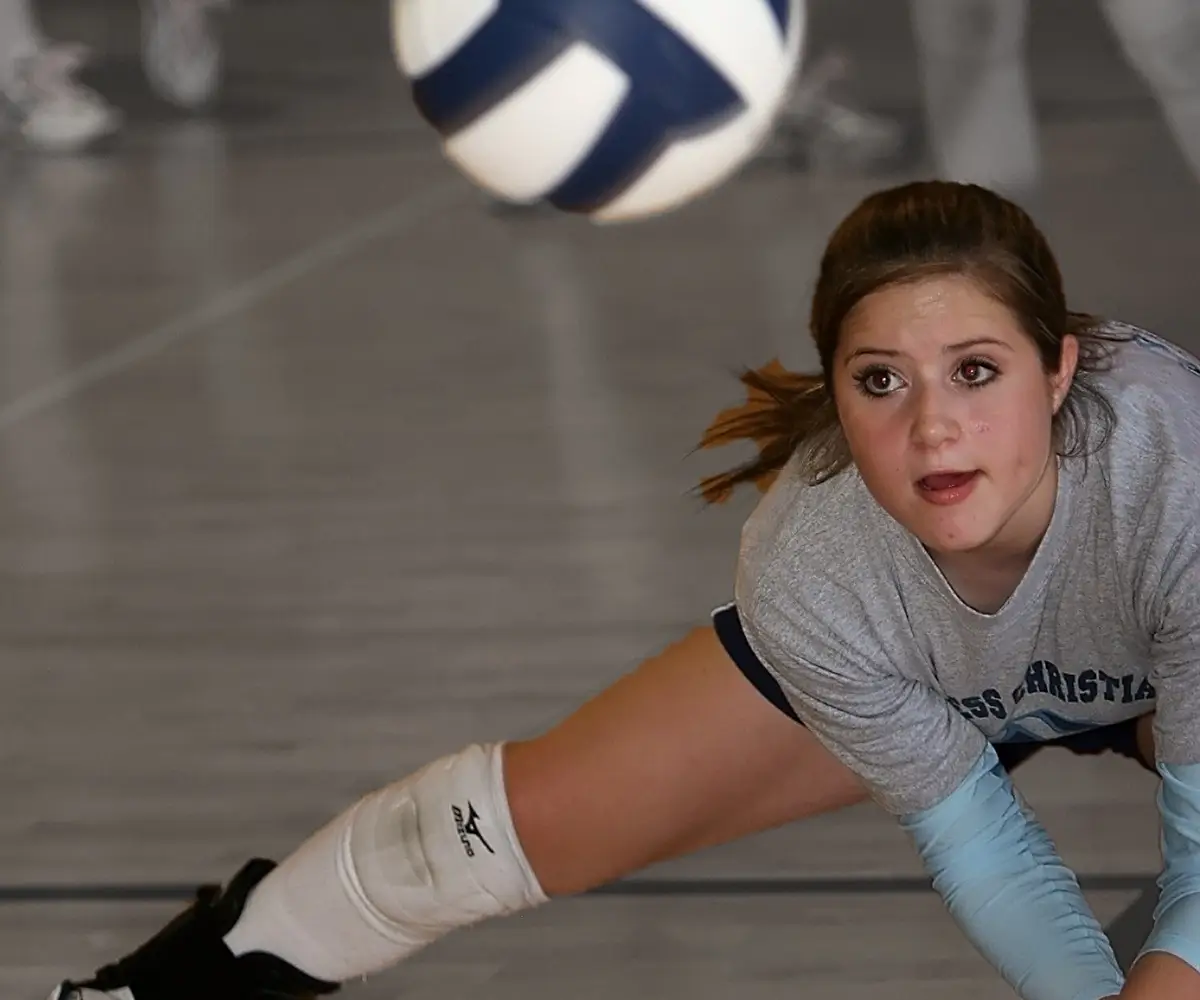Last Updated: January 9, 2024
Defense players should know that it’s their responsibility to keep any ball coming in their direction off the ground. It’s either they dig the ball or dive to get it.
Participating in various workout routines outlined in this article will help you dive and dig balls efficiently to save points.
Although digging is necessary for a defense play in each game, no great defender finishes their career with no dives. Diving is now an essential skill that can propel your team to greatness. You should not only learn how to dive but also how you can land safely.
Ultimate Digging and Diving Workout Routine

Each skill in volleyball has its workout routine. A defender should aim at working on their diving and digging techniques to perfection for better gameplay.
You can develop a workout routine for practicing either digging or diving individually. However, it’s better to exercise workouts that target both skills since they go hand in hand.
1. Warm-up Activities
It would help if you first did activities that warm up your body for the next training sessions whenever you get on the court. Warm-up activities help build a player’s stamina and flex their muscles for effective volleyball play.
Here are some activities to try.
Jogging
Start your training session with light jogs. Jogging helps to increase your blood flow and heart rate. Moreover, it flexes your muscles and prepares them for the next exercise.
Dynamic stretching
After jogging, perform dynamic stretching movements, which help improve your mobility and flexibility. Ensure you cover all these activities – torso rotations, leg swings, and arm circles as your focus points. Perform all the stretches in a smooth but controlled manner for better preparation of the muscles.
Cardiovascular exercises
A beginner should enhance their cardiovascular endurance, which helps maintain high energy levels when playing. Activities like skipping a rope, jumping jacks, bending up and down, or high knees are very effective. Start slowly and increase your pace accordingly.
Agility and balance drills
These drills are important for both beginner and experienced players. Do cone drills, ladder drills, or balance board exercises to boost your stability and alertness.
Recommended read: Is Your Digging Game Strong? Common Mistakes to Avoid and Proven Strategies to Excel in
2. One Knee Dive
Play in pairs of two and face each other. One player holds the ball and makes an underhand pass to you. The player passing the ball should deliver different passes to make it hard for you to defend.
Have a crash mat, which you dive into with one knee and try to dig the ball back. A mat helps you not hurt your arms and chest as you contact the ground. Swap positions with the opposite player for each one to have enough practice. This workout helps you to improve both the digging and diving skills.
3. Flexed Arms
Work in pairs. Lie facing down while the other stands, holding your legs up. Move forward with your arms to push and pull your body. The drill warms up the arms for easy digging.
Also read: How Digging and Diving Affect the Outcome of Volleyball Matches
4. Spin and Sprint
Position about five players on the baseline. Upon the coach’s alert, the players should jump and spin through 180 degrees, then face the net. After that, the players should speed forward. This move flexes your legs and makes it easier for you to dig or dive.
Start in a standing posture and later shift to starting from lower positions, sitting down, or on your knees. Starting from a lower position helps improve a player’s reaction time.
5. Jump, Dive and Dig
Work in pairs and face each other. Start the ball by making an underhand pass to the opposite player. The player dives forward, starting with their front foot, then uses all their explosive energy to dig the ball. Change positions and continue the workout.
The defense player should start with a crash mat and remove it as they perfect the skill. Throw the ball at a good height for the other player to be in a position to dive towards the ball properly. Note that your knees should not touch the ground on landing.
Related: How to Become a Digging and Diving Maestro This Year
Conclusion
Developing a proper digging and diving workout routine is the best step to becoming a successful volleyball defense player. Please coordinate with your partner, track the ball, and dig or dive to save it.
A coach should introduce and evaluate the skills slowly and carefully to lower the risk of injury to a player’s arms, legs, or wrists.
Your workout routine should improve your flexibility, explosive strength, and reaction speed, which are essential for good defense.
